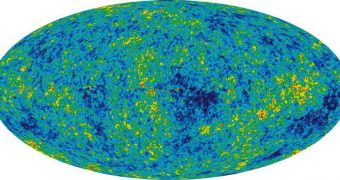The theory that holds the Big Bang responsible for the creation of the Universe is one way of explaining how everything around us came to be, but it also raises questions as to what happened in those early moments, when the basis for all that exists today was set. More specifically, experts wonder what happened in the first trillionth of a trillionth of a trillionth of a second after the Universe sprung into existence. To answer that very question, National Institute of Standards and Technology (NIST) experts have created a brand new class of super-sensitive microwave detectors, which may be able to provide astronomers with the much-sought-after answer.
The result of a collaboration involving NIST, the Princeton University, the University of Colorado at Boulder (UCB), and the University of Chicago, the new sensors were presented on Saturday, May 2nd, at the annual American Physical Society (APS) meeting, in Denver, Colorado. The tiny devices were created with the sole purpose of analyzing the cosmic microwave background (CMB) radiation, and identifying elements in it dating as far back as possible.
According to the timeline that was presented for the experiments, the new sensors are scheduled to become operational in about a year from now, and will be mounted in a very powerful array in the Chilean desert. They will be retrofitted on a telescope, which will in turn be placed inside a modified shipping container. The experts hope that this setup will allow for very precise and meticulous observations of the early microwave background, perhaps even to the first moment after the Big Bang.
The array will also look for primordial gravitational waves, which are ripples in the fabric of space-time, left behind by the enormous forces that created the entire Universe some 13.7 billion years ago. These ripples are believed to have left their barely imperceptible imprint on the direction of the CMB electric field, imprints that astrophysicists have termed the “B-mode polarization.”
“This is one of the great measurement challenges facing the scientific community over the next 20 years, and one of the most exciting ones as well. The universe is a physics lab. If you look far away, you are actually looking back in time, potentially observing interactions that occurred at energy levels forever out of reach of terrestrial experiments,” the NIST Physicist in charge of the entire array project, Kent Irwin, explained.
“The B-mode polarization is the most significant piece of evidence related to inflation that has yet to be observed. A detection of primordial gravitational waves through CMB polarization would go a long way toward putting the inflation theory on firm ground,” NIST postdoctoral scholar Ki Won Yoon, who has been in charge of describing the entire sensor project at the annual APS meeting, added.

 14 DAY TRIAL //
14 DAY TRIAL //